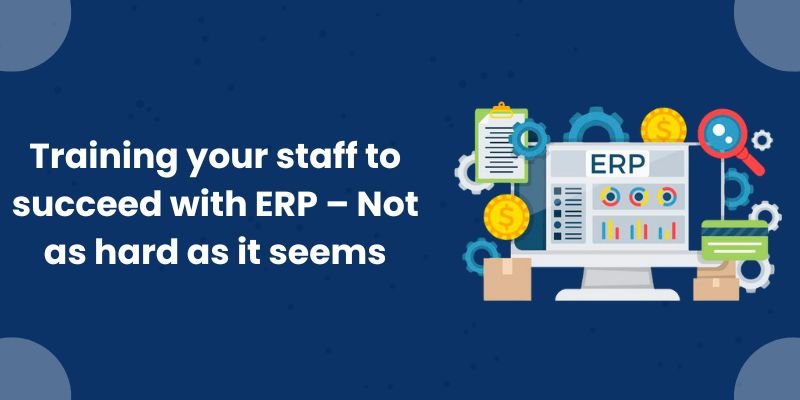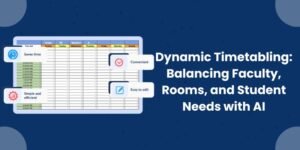The Real Challenge of ERP
Enterprise Resource Planning (ERP) systems promise improved efficiency, real-time insights, and streamlined communication in educational institutions. Yet, for many leaders, one lingering fear stands between planning and implementation: “What if my staff can’t adapt?”
The truth is, ERP training is not as hard as it seems—when approached strategically. Resistance doesn’t stem from inability, but often from fear of the unknown. With the right methods, training becomes less about mastering a complex tool and more about enabling people to work smarter.
Let’s explore how to demystify ERP training and help your staff not just use the system—but thrive with it.
Step 1: Change the Mindset – Start with the “Why”
Before training even begins, it’s important to shift how staff perceive the ERP system. When introduced as a top-down directive, resistance is natural. But when ERP is framed as a solution to existing frustrations—manual paperwork, slow approvals, inefficient communication—people listen.
Highlight how digitisation will:
- Eliminate repetitive manual tasks
- Increase transparency and accountability
- Allow staff to focus on impactful work
- Provide easy access to data and reporting
Start by building excitement and aligning ERP goals with staff priorities. This fosters engagement and reduces anxiety about learning something new.
Step 2: Role-Based Training – No One-Size-Fits-All
Training should be tailored to job roles. Your admissions team, academic staff, accounts department, and HR all use different features—and that’s exactly how the training should be structured.
Instead of overwhelming users with the full system, create learning paths such as:
- Admissions process automation
- Timetable creation and course management
- Fee collection and financial reconciliation
- Leave applications and HR workflows
This modular training ensures clarity, relevance, and higher retention.
Step 3: Learn by Doing – Use Real-World Workflows
ERP platforms are best understood in action. Static presentations won’t do the job—interactive, scenario-based sessions are key.
- Simulate common tasks (e.g., “Submit a leave request” or “Approve a student’s fee payment”)
- Use dummy data for hands-on exploration
- Allow space for trial and error in a safe, non-judgmental environment
This experiential learning method not only improves confidence but also accelerates mastery.
Step 4: Phased Rollout – Don’t Do Everything at Once
A big mistake institutions make is trying to train everyone on everything immediately. A phased ERP implementation makes adoption easier and less overwhelming.
Begin with one or two departments—often HR, finance, or admissions. Let them act as early adopters, and gather feedback to improve future rollouts.
Early success stories from these teams build credibility and serve as internal case studies to encourage others.
Step 5: Establish Ongoing Support Channels
Training doesn’t end with the first workshop. Your staff need ongoing support to answer questions, troubleshoot problems, and reinforce learning.
Offer:
- A central helpdesk or support contact
- FAQ documents and tutorial videos
- Super users or “ERP champions” in each department
- Drop-in sessions for follow-up training
This makes your ERP ecosystem feel supportive and accessible—not alienating.
Step 6: Acknowledge and Celebrate Progress
Change is difficult—but recognition can go a long way. Highlight examples of:
- Time saved due to automated workflows
- Errors reduced in reporting
- Faster turnarounds on common requests
Share testimonials from staff members who feel more productive or empowered. These stories validate the training process and reinforce a culture of digital growth.
Training Tools & Platforms That Help
Several platforms and methods can enhance ERP training in institutions:
- LMS integration: Deliver training modules through your learning management system so staff can complete them at their pace.
- Interactive webinars: Host monthly refresher webinars to address common pain points or new features.
- Gamification: Use quizzes and badges to keep sessions engaging and track progress.
- Mobile-based learning: Many ERP platforms now support mobile apps—so training should include mobile workflows too.
Leadership’s Role in ERP Training
Leaders must set the tone for successful ERP training. That means:
- Actively participating in the process
- Advocating for the benefits
- Ensuring training is prioritised alongside daily operations
- Addressing concerns with empathy and transparency
When staff see that leadership believes in the ERP system, they’re more likely to engage with training seriously.
Training your staff on ERP is more than a technical exercise—it’s an investment in institutional capacity building. With thoughtful planning, tailored content, and the right support, ERP adoption becomes a smooth and empowering experience.
Let’s stop treating ERP as a burden and start recognising it for what it is: a tool that supports people—not replaces them.
Your staff are capable. Your processes are valuable. All it takes is the right approach to bring the two together.












